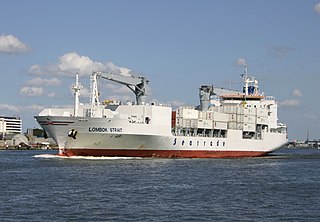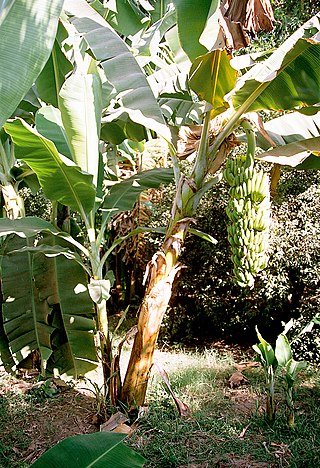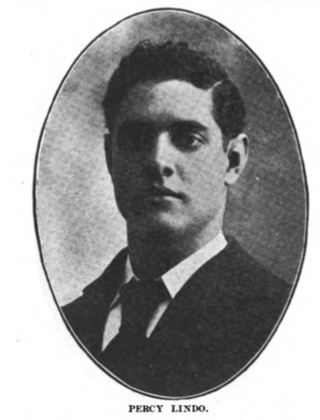
A dockworker is a waterfront manual laborer who is involved in loading and unloading ships.

A reefer ship is a refrigerated cargo ship typically used to transport perishable cargo, which require temperature-controlled handling, such as fruits, meat, vegetables, dairy products, and similar items.

Saint Mary is a parish located in the northeast section of Jamaica. With a population of 114,227 it is one of Jamaica's smallest parishes, located in the county of Middlesex. Its chief town and capital is Port Maria, located on the coast.

USS Ariel (AF-22) was the United Fruit Company cargo and passenger liner Peten, renamed Jamaica in 1937, that served as a United States Navy Mizar-class stores ship in World War II.

Maori was a British refrigerated cargo steamship built in 1893 by C.S. Swan & Hunter of Wallsend-on-Tyne for Shaw, Saville & Albion Co. of London with intention of transporting frozen meat and produce from Australia and New Zealand to the United Kingdom. The vessel stayed on this trade route through her entire career. In August 1909 while on one of her regular trips, she was wrecked on the coast of South Africa with the loss of thirty two of her crew.

USS Mizar (AF-12) was the United Fruit Company fruit, mail and passenger liner Quirigua that served as a United States Navy Mizar-class stores ship in World War II.

USS Talamanca (AF-15) was the United Fruit Company cargo and passenger liner Talamanca that served as a United States Navy Mizar-class stores ship in World War II.

Banana production in the Caribbean is widespread. Bananas are cultivated by both small farmers and large land holders. The plant is perennial and is planted either in pure stands or in mixed cultivation, such as in Jamaica. Countries where bananas are a main export crop are Belize, Costa Rica, Dominican Republic, Honduras, Jamaica, Guadeloupe, Dominica, Martinique, Saint Lucia, Saint Vincent and the Grenadines, Grenada, Trinidad and Tobago, Nicaragua, Panama, Suriname and Colombia.

Port Maria is the capital town of the Jamaican parish of Saint Mary.

MV Paul R. Tregurtha is a Great Lakes-based bulk carrier freighter. She is the current Queen of the Lakes, an unofficial but widely recognized title given to the longest vessel active on the Great Lakes. Launched as MV William J. De Lancey, she was the last of the thirteen "thousand footers" to enter service on the Great Lakes, and was also the last Great Lakes vessel built at the American Ship Building Company yard in Lorain, Ohio. The MV Paul R. Tregurtha is the current flagship for the Interlake Steamship Company.

The Boston Fruit Company (1885-1899) was a fruit production and import business based in the port of Boston, Massachusetts. Andrew W. Preston and nine others established the firm to ship bananas and other fruit from the West Indies to north-eastern America. At the time, the banana was "considered a rare and delicious treat" in the United States. The major challenge for all banana importers was to get the highly perishable fruit to the American market before it spoiled." Ship captain Lorenzo Dow Baker served as president of the company and manager of the tropical division. By 1895 "the corporation own[ed] nearly 40,000 acres, included in 35 plantations, and deep-water frontage [in Jamaica] in the harbors of Port Antonio and Port Morant. They owned their own lines of steamships, which they operated between those ports and Boston, Philadelphia and Baltimore. Besides carrying their own fruits, they carried some outside freight, and afford passenger accommodations for many tourists visiting the West-India Islands."
David Louis Clemetson, born in Jamaica into a wealthy family, was one of the first black people to serve as an officer in the British Army. He was commissioned in the Pembroke Yeomanry in October 1915. He was killed in action in France in September 1918.

Corvus was a steam cargo ship built in 1919 by Columbia River Shipbuilding Company of Portland for the United States Shipping Board as part of the wartime shipbuilding program of the Emergency Fleet Corporation (EFC) to restore the nation's Merchant Marine. The freighter was operated on international and domestic routes through 1944. Early in 1945 she was transferred to Soviet Union as part of lend-lease program and renamed Uzbekistan. After several months of operation, the freighter was rammed by another vessel on 31 May 1945 and was beached to avoid sinking. She was subsequently raised and towed to Portland where she was scrapped in 1946.

Andrew Betts Brown MICE MINA (1841–1906) was a Scottish engineer and inventor. He invented the hydraulic crane and overhead travelling crane. He founded several companies including the Vauxhall Iron Works, which later evolved into Vauxhall Motors, and the huge British engineering firm Brown Brothers.
Sangstad was a steam cargo ship built in 1904 by the Robert Thompson & Sons of Sunderland for A. F. Klaveness & Co of Sandefjord. She was primarily employed as an ore carrier and collier doing tramp trade during her career.

Rosario di Giorgio was a steam cargo ship built in 1907 by the Nylands Verksted of Kristiania for Bernhard Hanssen of Flekkefjord. The ship was primarily employed as a fruit carrier during her career. She was named after Rosario di Giorgio, manager of Baltimore branch of Atlantic Fruit Company, and brother of Joseph di Giorgio, founder of the company.

Ore Steamship Company and the Ore Navigation Corpoartion were subsidiaries of the Bethlehem Steel Company founded in New York City in 1927. Ore Steamship Company was a proprietary company that was founded so Bethlehem Steel could move goods needed by Bethlehem Steel Company. Ore Steamship Company would transport iron ore to the Bethlehem Steel mills on the Atlantic coast. Some ships took steel and steel products to Bethlehem Shipyards. Port of Baltimore was a major Bethlehem Steel port, the dock was 2,200 feet long in order to load and unload three large, 28,000-ton cargo ships at the same time.

A. H. Bull Steamship Company was a shipping company and passenger liner service founded in New York City in 1902 by Archibald H. Bull (1848-1920). Service started with shipping between New York and Florida. His fleet of ships then added service to other Eastcoast ports. The company is also often called the Bull Lines and the Bull Steamship Line or A. H. Bull & Company. While founded in New York, Bull soon move its headquarter to Peir 5 in Baltimore, Maryland. Bull Lines main Eastcoast ports were: Baltimore, Charleston, Philadelphia, Tampa and Norfolk, Virginia. Oversea ports: Porto Rico, Antwerp, Bordeaux, Hamburg, Bremen, Copenhagen, and West Africa. Bull Steamship Line supported the US war effort for both World War I and World War II, including the loss of ships.

Percy Lindo was a Jamaican banker, planter, industrialist and Member of the Legislative Council of Jamaica.

Cecil Vernon Lindo was a Jamaican banker, industrialist, planter and philanthropist.



















